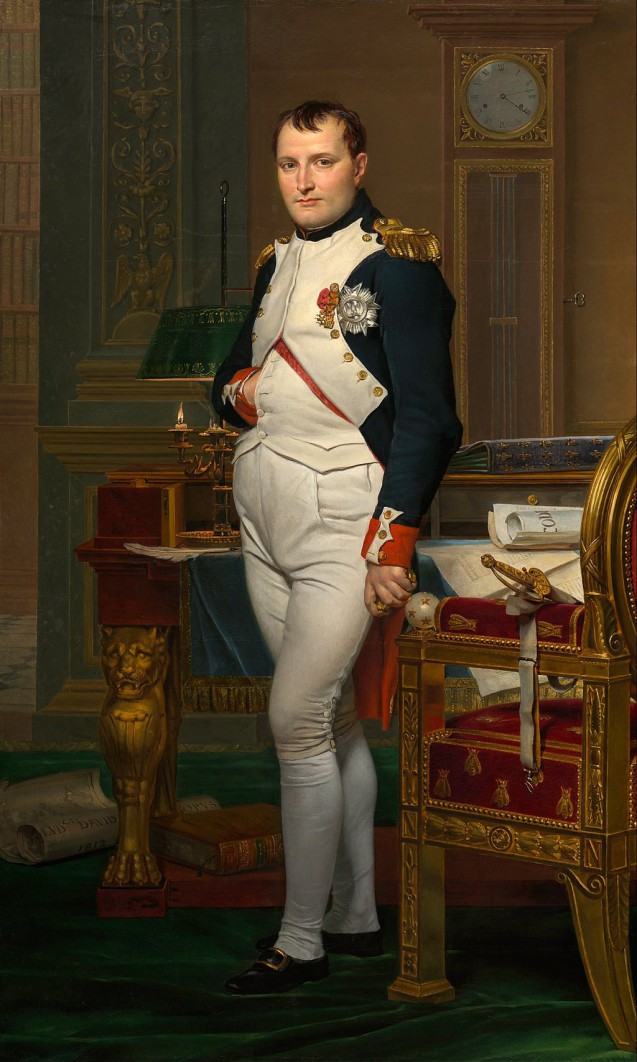We all know David’s portrayal of the workhorse Emperor starting up from his desk at four in the morning. How should we interpret it? Is it political propaganda from the regime itself? Yes and no – it’s complicated…
The work was a commission from a mega-rich Scottish noble. Though a Member of Parliament from, and briefly diplomat for, a country at war (to the death) with France, that noble, Alexander, 10th Duke of Hamilton, was a left-winger (Whig) and admirer of Napoleon.
He was also vain and proud, who thought himself (not unreasonably, given the antiquity of the Hamilton family and its links to Mary Queen of Scots) the rightful heir to the Scottish throne. Hamilton wrote to David in 1811 requesting an image of Napoleon “in one of the historic moments that have made him immortal”. He presumably wanted a battle scene. What David gave him was something entirely different. The French painter was going through a period of doubt, when he felt estranged from the Emperor. So, his composition for a foreign collector, which he showed to Napoleon, was part of his desire to get back into the Emperor’s good books.
In this painting, David, the regicide (that is, he had voted for the execution of Louis XVI), appears to present a contemporary, 1812 vision of Napoleon. But what we get, subtly, is the Emperor transported back in time to 1804. We are given a more republican Emperor who had just promulgated the Code Civil (visible in the painting), we are given a ‘hero from Plutarch’ of the Corsican’s early years (the Parallel Lives lies under the table). So in 1812, when the absolute hereditary monarch of the Fourth Race of France viewed this representation of a Revolutionary monarch ‘working nights’, he was delighted, requesting a copy (which was to remain in his family’s hands until this day).
And David was to exhibit the painting in his studio to great public acclaim before dispatching the original to Scotland.
This work is thus the most perfect form of propaganda, coming as it does not from the Emperor but from the artist himself. David gave Napoleon what David thought Napoleon might like. The Parisian public saw the painting in numbers, and the lesson was learned. Napoleon did not even have to dictate the message (as he had had to do with other works, notably, Gros’s “Napoleon on the Battlefield at Eylau”).


